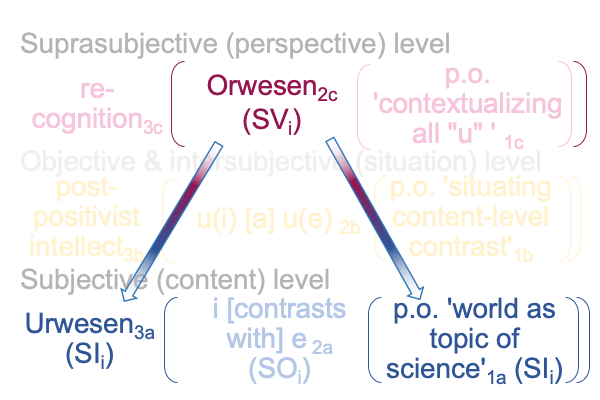0327 Oh-oh, indeed.
0328 Let me replace terms in the Positivist’s judgment with terms that might come from Aristotle’s toolkit. Instead of model (i) let me substitute “useful form” (thereby introducing final and formal causalities). Also, instead of noumenon (2), I will write “the thing itself”.
Here are the previous statements, once again.
On the content level, a useful form (i) contrasts with the thing itself (e).
On the situation level, an artisan regards the thing itself according to his aims for utility (useful form, u(i), gazes (a) at the thing itself, (u(e)) and sees a reflection of the artisan’s capabilities.
On the perspective level, the artisan regards his own image in the thing-itself side of Tabaczek’s mirror, instead of the One who Signifies.
At the same time, the One Who Signifies sees His own image on the artisan’s side of the mirror, along with the material that may be fashioned into a useful form.
In the significant vision2c, both the originating material (e) and the useful form (i) are embodied as contenta.
It is as if an idea in the mind of the One Who Signifies3c emanates a sign-vehicle that creates the artisan3a (as a normal context) and the useful potential of the thing itself1a as a sign-interpretant.
0329 Here is a picture of how that looks for Klause’s interscope.

0330 This particular sign-relation is called “the interventional sign”.
The interventional sign is discussed in Razie Mah’s October 2023 blog titled Looking at John Deely’s Book (2010) “Semiotic Animal”.
Here is how the triadic sign-relation is stated.
The Orwesen2c (interventional sign-vehicle, SVi) stands stands for the model [contrasts with] the noumenon2a(interventional sign-object, SOi) in regards to the Urwesen (scientific discipline)3a operating on the potential of ‘a topic of science’1a (interventional sign-interpretant, SIi).
